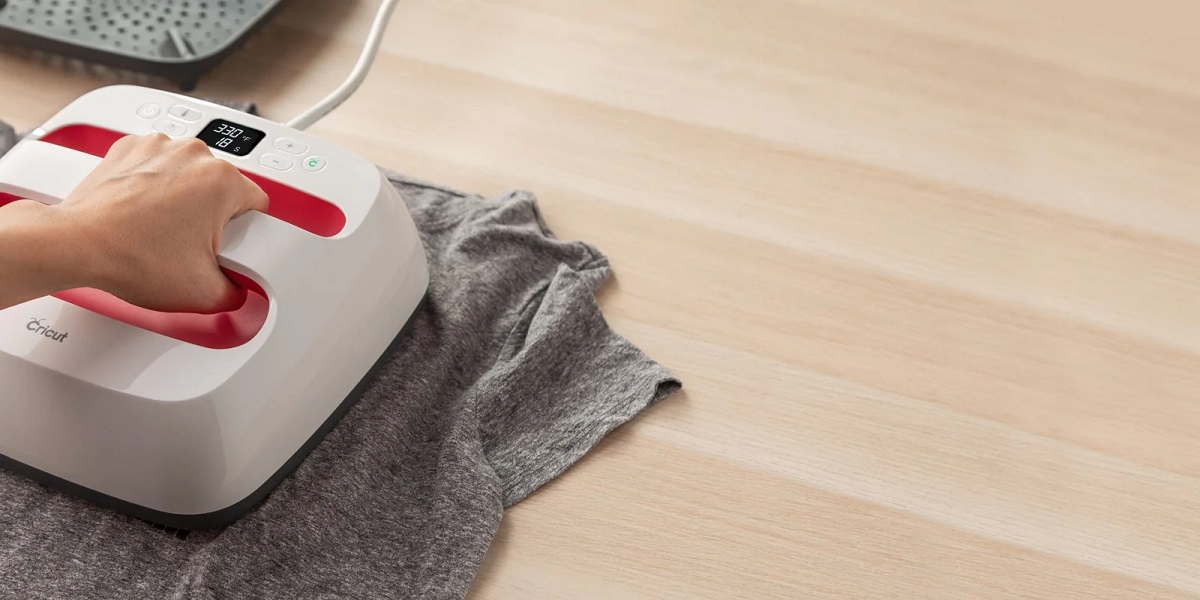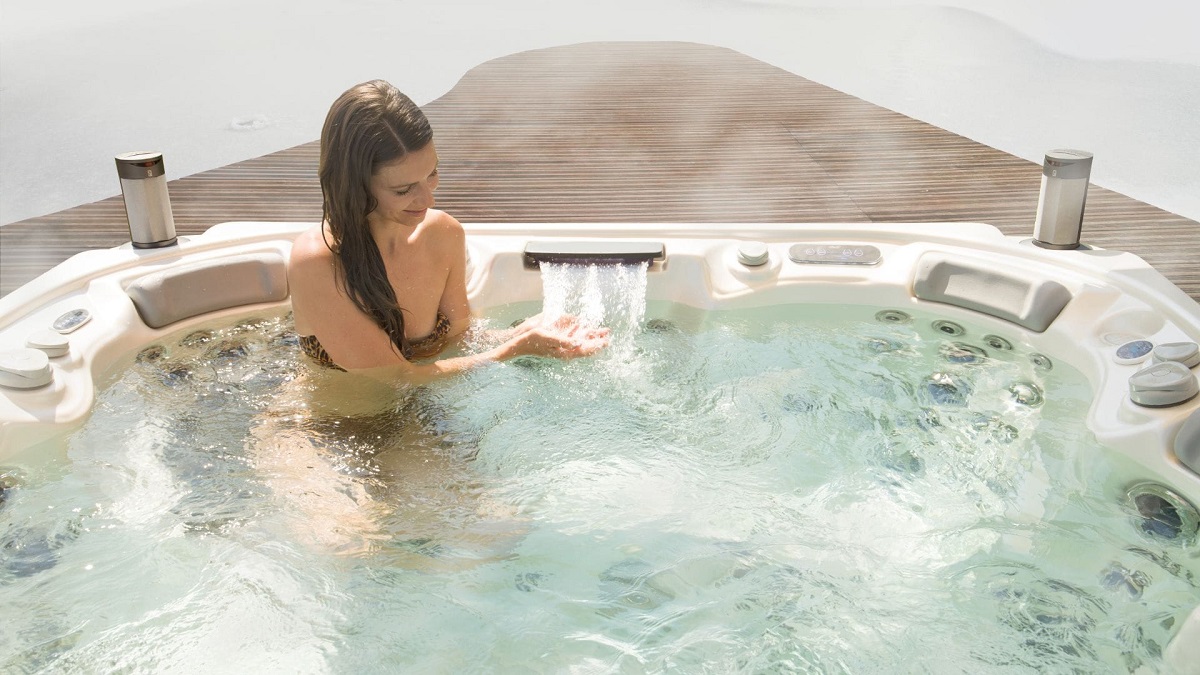Home>Art & Crafts>Cricut Heat Guide: A Comprehensive Resource For Using Heat With Your Cricut Machine


Art & Crafts
Cricut Heat Guide: A Comprehensive Resource For Using Heat With Your Cricut Machine
Published: February 19, 2024
Discover the ultimate heat guide for your Cricut machine. Perfect for art and crafts enthusiasts looking to master heat applications.
(Many of the links in this article redirect to a specific reviewed product. Your purchase of these products through affiliate links helps to generate commission for Temperatures.com, at no extra cost. Learn more)
Table of Contents
Introduction
Welcome to the ultimate guide for using heat with your Cricut machine! Whether you're a seasoned crafter or just starting out, mastering the art of heat application with your Cricut opens up a world of creative possibilities. From personalized t-shirts and tote bags to custom home decor and accessories, the potential for transforming everyday items into unique works of art is limitless.
In this comprehensive resource, we will delve into the intricacies of using heat with your Cricut machine, providing you with valuable insights, tips, and troubleshooting techniques to ensure successful heat applications every time. Whether you're using a Cricut Explore Air 2, Maker, or Joy, this guide will equip you with the knowledge and confidence to embark on a wide range of heat transfer projects.
By understanding the nuances of heat settings, selecting the right heat transfer materials, and preparing your designs for flawless application, you'll be well on your way to creating professional-quality heat transfer projects that reflect your individual style and creativity. Additionally, we'll explore the specific considerations for using heat with different Cricut machines, ensuring that you can leverage the unique capabilities of your device to achieve stunning results.
As we journey through this guide, you'll gain a deeper understanding of the intricacies of heat application, empowering you to troubleshoot common issues and implement expert tips and tricks for seamless heat transfer experiences. Whether you're a hobbyist looking to personalize gifts for loved ones or an entrepreneur seeking to launch a custom merchandise business, the knowledge and techniques shared in this guide will serve as your indispensable companion in the world of heat application with your Cricut machine.
So, grab your Cricut machine, unleash your creativity, and get ready to embark on an exciting exploration of heat application that will elevate your crafting endeavors to new heights!
Understanding Heat Settings on Your Cricut Machine
Mastering the heat settings on your Cricut machine is fundamental to achieving successful heat transfer applications. Whether you're working with different types of heat transfer materials or varying fabric compositions, understanding and customizing the heat settings is crucial for achieving professional-quality results.
Importance of Heat Settings
The heat settings on your Cricut machine play a pivotal role in determining the success of your heat transfer projects. Different heat transfer materials, such as iron-on vinyl, infusible ink, and heat transfer paper, require specific temperature and time settings to ensure proper adhesion to the base material. Additionally, factors such as the type of fabric, its thickness, and the presence of any coatings or treatments influence the ideal heat settings for a successful transfer.
Customizing Heat Settings
Cricut machines offer the flexibility to customize heat settings based on the specific requirements of your project. By adjusting the temperature and duration of the heat application, you can tailor the settings to accommodate different materials and fabric types. This customization capability empowers you to achieve optimal adhesion and durability for your heat transfer designs, regardless of the complexity of the project.
Heat Settings for Different Materials
Each type of heat transfer material has unique heat application requirements. For instance, when working with iron-on vinyl, the recommended heat settings typically range between 300°F to 350°F, with a pressing duration of 15 to 30 seconds. Conversely, infusible ink necessitates higher temperatures, often around 385°F to 400°F, and longer pressing times to activate the ink's sublimation process effectively.
Considerations for Fabric Types
In addition to material-specific heat settings, it's essential to consider the fabric composition when determining the ideal heat settings. Natural fibers, such as cotton and linen, generally require higher heat settings for effective adhesion, while synthetic fabrics like polyester demand lower temperatures to prevent scorching or melting. Understanding the behavior of different fabric types under heat application enables you to make informed decisions when customizing the heat settings for your projects.
Calibration and Testing
To ensure precise and consistent heat application, calibrating your Cricut machine's heat settings and conducting test transfers on scrap materials are invaluable practices. Calibration allows you to fine-tune the temperature and time settings to align with the specific characteristics of your machine, while test transfers enable you to verify the adhesion and durability of the heat transfer material before applying it to your final project.
By comprehensively understanding and customizing the heat settings on your Cricut machine, you can embark on heat transfer projects with confidence, knowing that your designs will adhere seamlessly and withstand the test of time. This foundational knowledge forms the cornerstone of successful heat application, empowering you to explore a myriad of creative possibilities with your Cricut machine.
Choosing the Right Heat Transfer Material
Selecting the appropriate heat transfer material is a critical decision that significantly influences the outcome of your heat transfer projects. With a wide array of options available, ranging from versatile iron-on vinyl to innovative infusible ink and traditional heat transfer paper, understanding the unique characteristics of each material is essential for achieving exceptional results.
Iron-On Vinyl
Iron-on vinyl, also known as heat transfer vinyl (HTV), is a popular choice for creating vibrant and durable designs on fabric. Available in a spectrum of colors, finishes, and specialty varieties such as glitter and holographic, iron-on vinyl offers versatility and longevity. Its adhesive backing, when activated by heat, securely bonds to the fabric, resulting in long-lasting designs that withstand repeated laundering. This material is ideal for customizing apparel, accessories, and home decor items, allowing for intricate and multi-colored designs to be transferred with precision.
Infusible Ink
Infusible ink represents a revolutionary approach to heat transfer, enabling seamless integration of designs into the fabric itself. Unlike traditional iron-on materials, infusible ink utilizes a sublimation process, where the ink transforms into a gas under heat and permeates the fabric fibers, resulting in vibrant, permanent, and virtually peel-proof designs. This innovative material offers unparalleled color vibrancy and durability, making it an excellent choice for creating professional-quality, custom apparel and accessories with intricate, photorealistic designs.
Heat Transfer Paper
For projects involving detailed or complex designs, heat transfer paper provides a versatile solution. This material allows you to print designs using an inkjet or laser printer and then transfer them onto fabric using heat. With options for light and dark fabrics, as well as specialty variations for stretchable materials, heat transfer paper accommodates a wide range of design possibilities. Whether creating personalized t-shirts, tote bags, or decorative textiles, heat transfer paper offers a convenient and accessible method for bringing your designs to life.
Considerations for Material Selection
When choosing the right heat transfer material for your project, several factors come into play. Consider the fabric type and color, the intricacy of the design, the desired durability, and the specific application requirements. By aligning the unique attributes of each material with the demands of your project, you can make informed decisions that ensure optimal adhesion, longevity, and visual impact.
By carefully evaluating the characteristics and capabilities of different heat transfer materials, you can confidently select the most suitable option for your specific project, setting the stage for successful and visually stunning heat transfer applications.
Preparing Your Design for Heat Application
Preparing your design for heat application is a crucial step that sets the foundation for a successful and visually striking heat transfer project. Whether you're creating personalized apparel, accessories, or decorative items, meticulous attention to the design preparation process ensures that your final product reflects precision, durability, and aesthetic appeal.
Design Composition and Layout
Before initiating the heat application process, it's essential to meticulously compose and arrange your design elements. Whether you're working with text, images, or a combination of both, consider the overall composition and layout to achieve a balanced and visually appealing result. Pay attention to factors such as alignment, spacing, and proportion, ensuring that your design elements harmonize seamlessly to convey your intended message or aesthetic.
Mirror Image Preparation
For designs intended for heat transfer onto fabric, creating a mirror image of the design is imperative. This step is particularly crucial when working with text or designs that contain directional elements. By mirroring the design, you ensure that when transferred onto the fabric, the final output appears in the correct orientation, eliminating the risk of unintended reversals or distortions.
Material Compatibility Assessment
Assessing the compatibility of your design with the selected heat transfer material and the base fabric is a critical consideration. Different materials and fabrics may exhibit varying adhesion properties, color vibrancy, and durability when subjected to heat application. By evaluating the interaction between your design and the chosen materials, you can anticipate and address any potential challenges, ensuring that the final result meets your quality and longevity expectations.
Precision Cutting and Weeding
If your design involves intricate shapes or fine details, precision cutting and weeding are essential to achieve clean and precise transfer results. Utilizing a cutting machine compatible with your chosen heat transfer material, such as a Cricut Explore Air 2 or Maker, allows for accurate cutting of intricate designs. Subsequently, weeding, the process of removing excess material from around the design elements, ensures that only the intended design components are transferred onto the fabric, resulting in a polished and professional appearance.
Test Application and Adjustment
Conducting a test application of your design on a scrap piece of fabric is a valuable practice to assess the adhesion, color vibrancy, and overall visual impact before proceeding with the final transfer. This step enables you to make any necessary adjustments to the heat settings, design composition, or material selection, ensuring that the final application yields the desired outcome.
By meticulously preparing your design for heat application, you lay the groundwork for a seamless and visually captivating transfer process. Attention to detail, compatibility assessment, and precision execution contribute to the overall success of your heat transfer project, empowering you to bring your creative vision to life with confidence and precision.
Using Heat with Different Cricut Machines
The versatility of Cricut machines extends to their compatibility with various heat transfer applications, offering crafters the flexibility to explore diverse projects across different machine models. Understanding the nuances of using heat with different Cricut machines is essential for harnessing the full potential of each device and achieving optimal results in heat transfer projects.
Cricut Explore Air 2
The Cricut Explore Air 2, renowned for its precision cutting capabilities, seamlessly integrates with heat transfer projects. Equipped with a fine-point blade and a versatile array of compatible materials, this machine excels in creating intricate designs for heat transfer applications. Its Smart Set Dial allows for easy selection of material settings, enabling crafters to customize heat settings for various heat transfer materials. Whether working with iron-on vinyl, infusible ink, or heat transfer paper, the Cricut Explore Air 2 empowers users to achieve precise and detailed heat transfer designs with ease.
Cricut Maker
The Cricut Maker, celebrated for its unparalleled cutting diversity and adaptive tool system, elevates the heat transfer experience to new heights. With the ability to accommodate a broader range of tools, including the Rotary Blade and Knife Blade, the Cricut Maker offers enhanced versatility for heat transfer projects involving diverse materials and fabric types. Its precise control over cutting pressure and speed, coupled with the compatibility with the Design Space software, enables crafters to create intricate and elaborate heat transfer designs with exceptional accuracy and finesse.
Read more: The Effects Of Heating Water
Cricut Joy
The compact and portable Cricut Joy, despite its smaller footprint, delivers remarkable proficiency in heat transfer applications. Designed for effortless and quick crafting, the Cricut Joy offers convenience and simplicity without compromising on quality. Its compatibility with Smart Materials and the ability to create continuous cuts up to 4 feet in length make it an ideal companion for smaller-scale heat transfer projects. Whether personalizing accessories, home decor, or apparel, the Cricut Joy streamlines the heat transfer process, making it accessible and enjoyable for crafters of all levels.
By leveraging the unique capabilities of each Cricut machine, crafters can tailor their heat transfer projects to suit their specific creative vision and technical requirements. Whether seeking intricate precision, diverse material compatibility, or streamlined simplicity, the diverse range of Cricut machines empowers crafters to embark on heat transfer projects with confidence and ingenuity, expanding the horizons of their crafting endeavors.
Troubleshooting Common Heat Application Issues
Even with meticulous preparation and attention to detail, heat transfer projects may encounter common issues that can impact the quality and durability of the final application. Understanding these potential challenges and implementing effective troubleshooting techniques is essential for overcoming obstacles and achieving successful heat transfer results.
Inadequate Adhesion
One prevalent issue in heat application is inadequate adhesion, where the transfer material fails to bond securely to the fabric. This can result from insufficient heat, inadequate pressure, or improper material compatibility. To address this, ensure that the heat settings align with the specific requirements of the transfer material and fabric type. Additionally, applying firm and consistent pressure during the heat transfer process promotes optimal adhesion, ensuring that the design adheres seamlessly to the fabric.
Peeling or Lifting of Design
Design peeling or lifting after heat application can diminish the visual impact and longevity of the transfer. This issue may arise due to premature peeling of the carrier sheet, inadequate cooling time, or improper handling post-application. To mitigate this, allow the design to cool completely before peeling off the carrier sheet. Additionally, exercising caution during the peeling process and using a smooth, deliberate motion can prevent unintended lifting or distortion of the design.
Uneven or Patchy Transfer
Uneven or patchy transfer of the design onto the fabric can detract from the overall visual appeal of the project. This issue may stem from inconsistent heat distribution, inadequate pressure, or irregular surface texture. To address this, ensure that the heat is evenly distributed across the entire design area during the application process. Using a heat press or iron with a flat, smooth surface aids in achieving uniform heat distribution, resulting in a seamless and visually consistent transfer.
Scorching or Discoloration
Scorching or discoloration of the fabric or transfer material can occur when exposed to excessive heat or pressure. This issue is particularly common when working with sensitive or heat-reactive fabrics. To prevent scorching or discoloration, carefully calibrate the heat settings to align with the fabric's tolerance and the transfer material's requirements. Additionally, using a pressing cloth or Teflon sheet as a protective barrier between the heat source and the fabric can safeguard against discoloration and preserve the fabric's integrity.
Fading or Dulling of Colors
Over time, heat transfer designs may experience fading or dulling of colors, compromising their vibrancy and visual impact. This issue can result from inadequate heat application, improper washing and care, or the use of subpar transfer materials. To mitigate color fading, ensure that the heat application adheres to the recommended settings for the transfer material. Additionally, following the manufacturer's guidelines for washing and caring for heat transfer designs preserves their color vibrancy and longevity.
By proactively addressing these common heat application issues and implementing targeted troubleshooting strategies, crafters can elevate the quality and durability of their heat transfer projects. Through a combination of precision, attention to detail, and informed problem-solving, crafters can navigate potential challenges with confidence, ensuring that their heat transfer applications yield professional-quality and visually captivating results.
Tips and Tricks for Successful Heat Application
Achieving flawless and durable heat transfer applications requires a combination of expertise, precision, and strategic execution. By incorporating the following tips and tricks into your heat transfer projects, you can elevate the quality and visual impact of your designs while ensuring a seamless and professional outcome.
1. Pre-Heating and Positioning
Before applying heat to the transfer material, pre-heating the fabric or base surface helps eliminate moisture and wrinkles, creating an optimal foundation for the transfer. Additionally, carefully positioning the transfer material on the fabric, using alignment guides or markers, ensures that the design is centered and accurately placed for a polished result.
2. Protective Covering
When using a heat press or iron for heat application, employing a protective covering such as a Teflon sheet or silicone pad safeguards the transfer material and fabric from direct contact with the heating element. This protective barrier prevents scorching, sticking, and ensures even heat distribution, preserving the integrity of the design and fabric.
3. Layering Techniques
For multi-colored or layered designs, employing layering techniques enhances precision and visual appeal. By applying individual design elements sequentially, using heat-resistant tape to secure each layer in place, you can achieve intricate and vibrant designs with seamless alignment and minimal risk of misplacement.
4. Cool Peel vs. Hot Peel
Understanding the peel type recommended for the specific transfer material is crucial. Some materials require a cool peel, where the carrier sheet is removed after the design has cooled, while others necessitate a hot peel, involving immediate removal of the carrier sheet after heat application. Adhering to the designated peel type ensures optimal adhesion and longevity of the design.
5. Post-Application Care
After completing the heat transfer process, allowing the fabric to cool completely before handling or washing preserves the integrity of the design. When washing garments or textiles with heat transfer designs, turning them inside out, using mild detergent, and avoiding harsh washing conditions prolongs the vibrancy and longevity of the transferred design.
6. Pressure and Duration Adjustment
Fine-tuning the pressure and duration of the heat application based on the specific characteristics of the transfer material and fabric type optimizes adhesion and durability. Experimenting with slight adjustments in pressure and duration during test transfers allows for customization of the heat application to suit the unique requirements of each project.
By integrating these expert tips and tricks into your heat transfer endeavors, you can navigate the intricacies of heat application with confidence and finesse, ensuring that your designs exude professional-quality, durability, and visual allure. These insights and techniques serve as invaluable assets, empowering you to embark on a diverse array of heat transfer projects with precision and creativity.
Conclusion
In conclusion, mastering the art of heat application with your Cricut machine opens up a world of creative possibilities, allowing you to transform everyday items into personalized works of art. Throughout this comprehensive guide, we have delved into the intricacies of using heat with your Cricut machine, providing valuable insights, tips, and troubleshooting techniques to ensure successful heat applications.
Understanding the nuances of heat settings on your Cricut machine is fundamental to achieving professional-quality results. By customizing the heat settings based on the specific requirements of different heat transfer materials and fabric types, crafters can embark on projects with confidence, knowing that their designs will adhere seamlessly and withstand the test of time.
Selecting the right heat transfer material is a critical decision that significantly influences the outcome of heat transfer projects. Whether working with versatile iron-on vinyl, innovative infusible ink, or traditional heat transfer paper, carefully evaluating the unique characteristics of each material empowers crafters to select the most suitable option for their specific projects, setting the stage for visually stunning heat transfer applications.
Meticulously preparing designs for heat application lays the groundwork for seamless and visually captivating transfer processes. Attention to detail, compatibility assessment, and precision execution contribute to the overall success of heat transfer projects, enabling crafters to bring their creative visions to life with confidence and precision.
The versatility of Cricut machines extends to their compatibility with various heat transfer applications, offering crafters the flexibility to explore diverse projects across different machine models. By leveraging the unique capabilities of each Cricut machine, crafters can tailor their heat transfer projects to suit their specific creative vision and technical requirements, expanding the horizons of their crafting endeavors.
Furthermore, by proactively addressing common heat application issues and implementing targeted troubleshooting strategies, crafters can elevate the quality and durability of their heat transfer projects, ensuring that their designs exude professional-quality and visual allure.
Incorporating expert tips and tricks into heat transfer projects elevates the quality and visual impact of designs while ensuring a seamless and professional outcome. These insights and techniques serve as invaluable assets, empowering crafters to embark on a diverse array of heat transfer projects with precision and creativity.
In essence, the knowledge and techniques shared in this guide serve as an indispensable companion in the world of heat application with your Cricut machine, empowering crafters to embark on an exciting exploration of heat transfer that will elevate their crafting endeavors to new heights. So, grab your Cricut machine, unleash your creativity, and get ready to embark on an exciting journey of heat application that will transform your crafting endeavors into personalized works of art.







